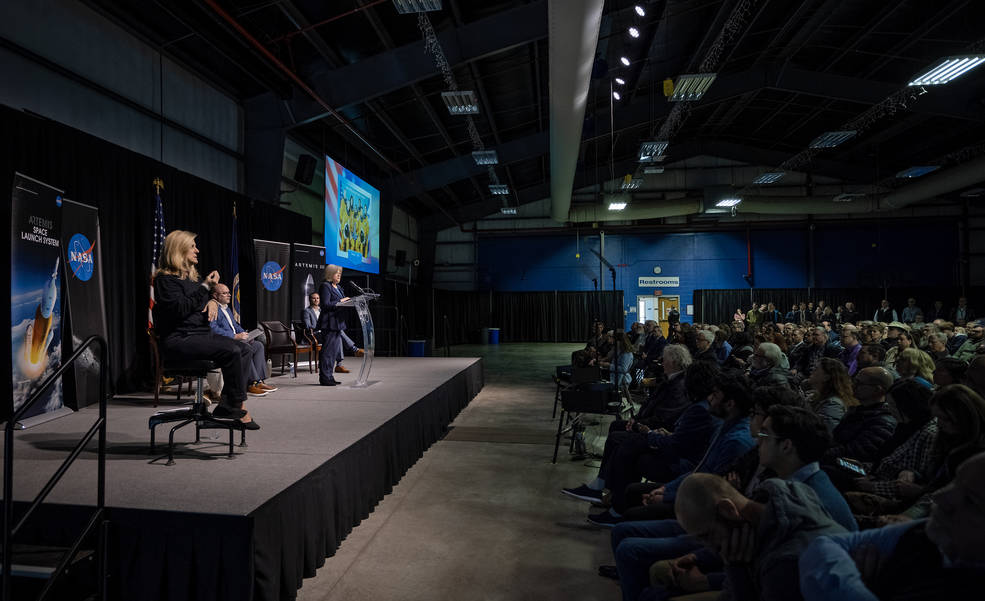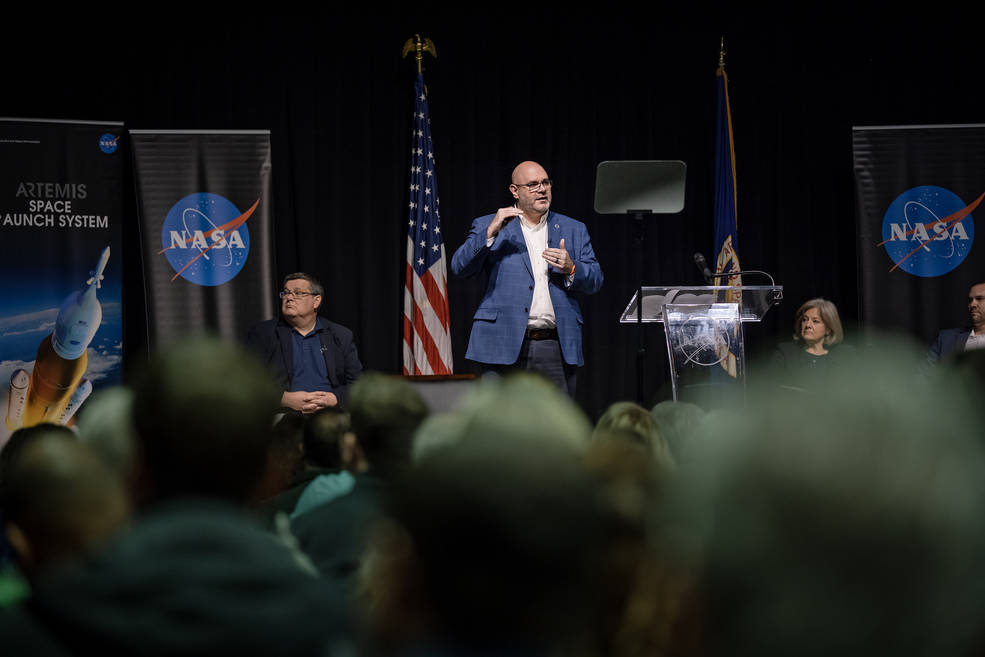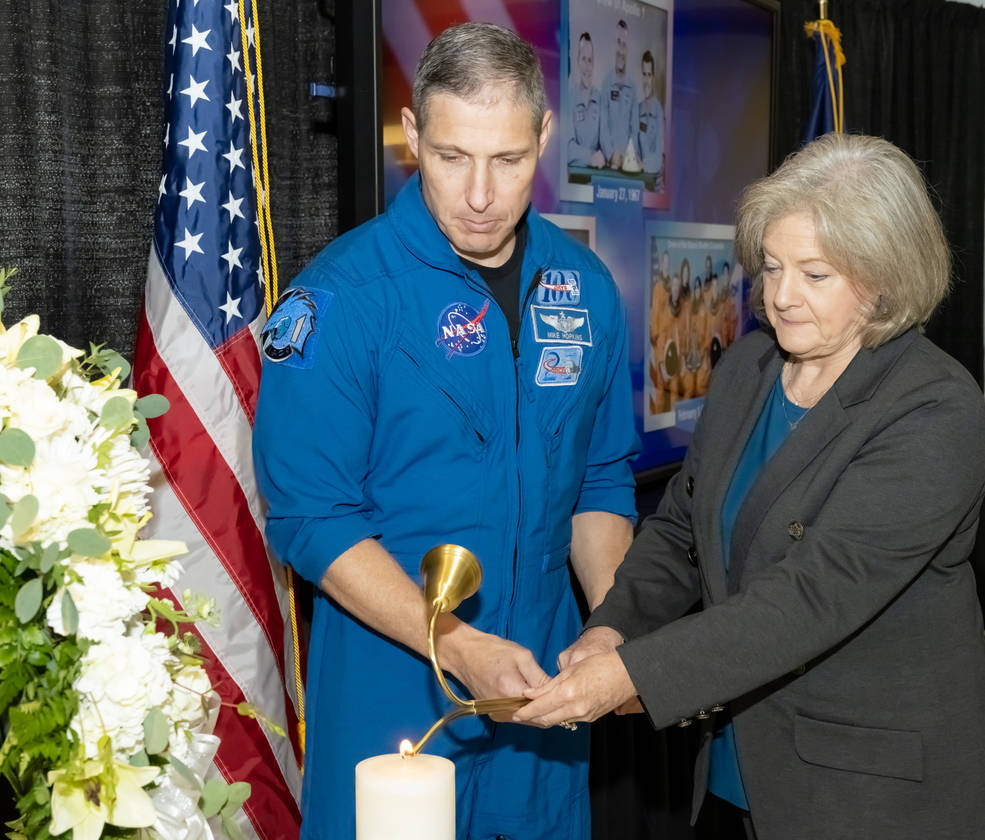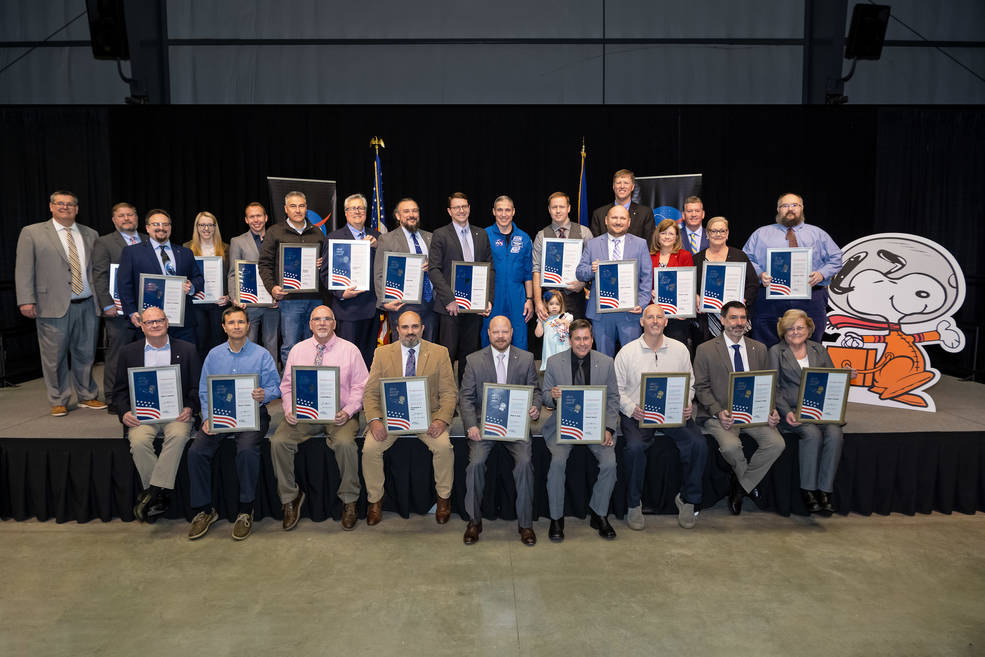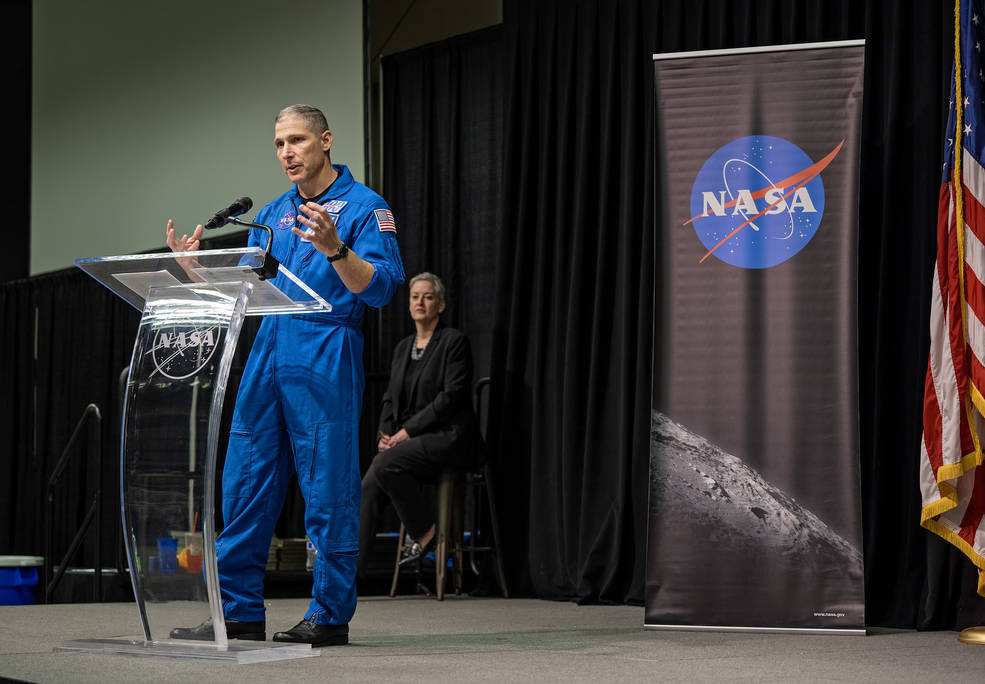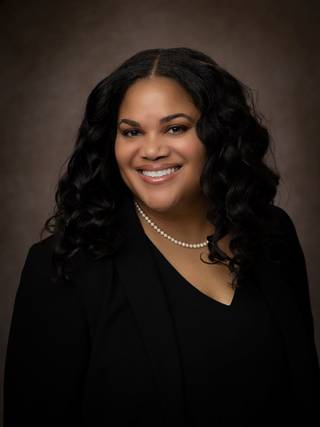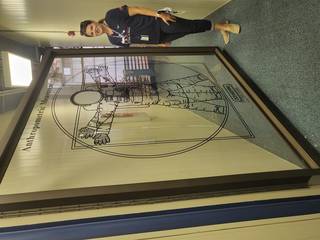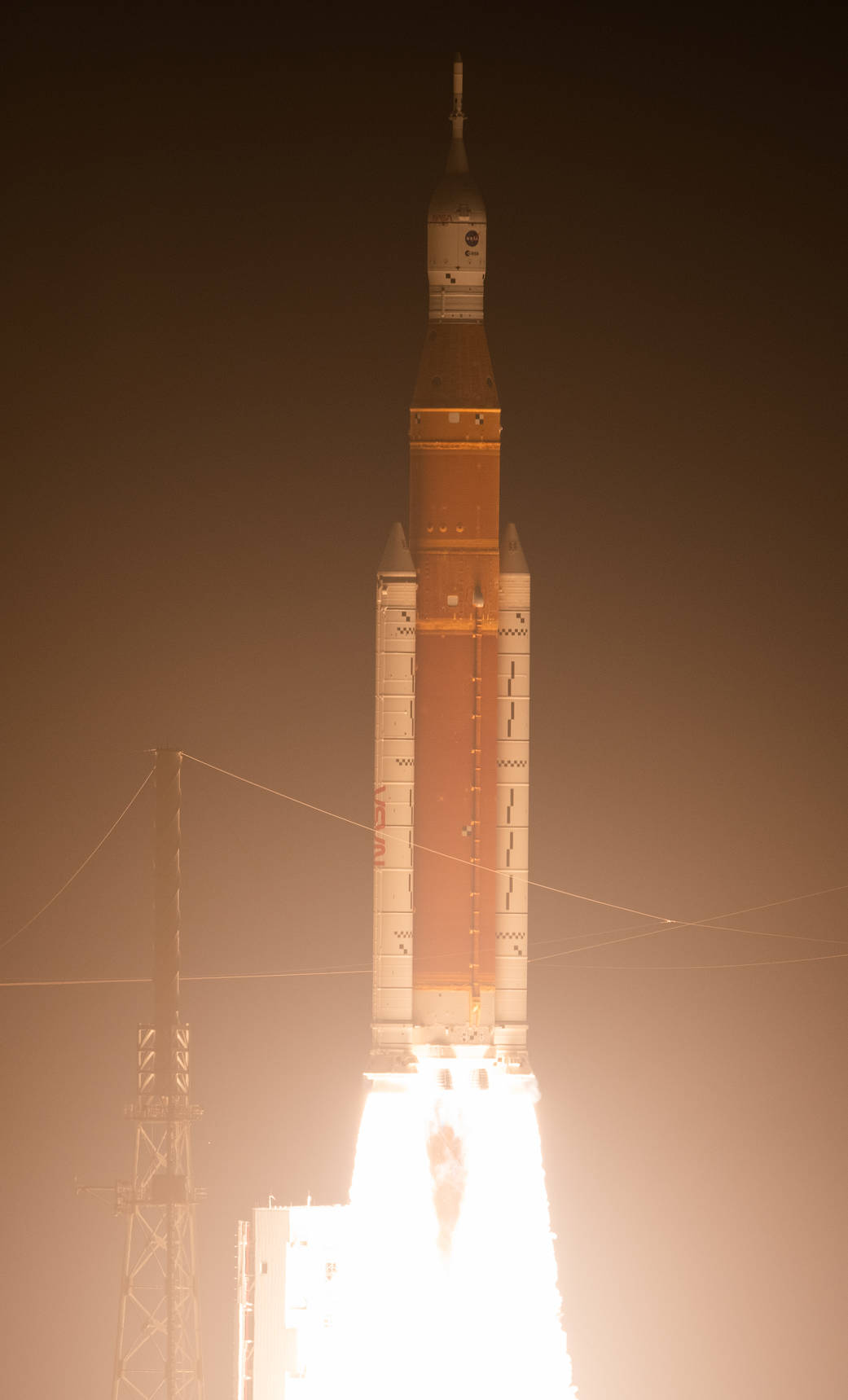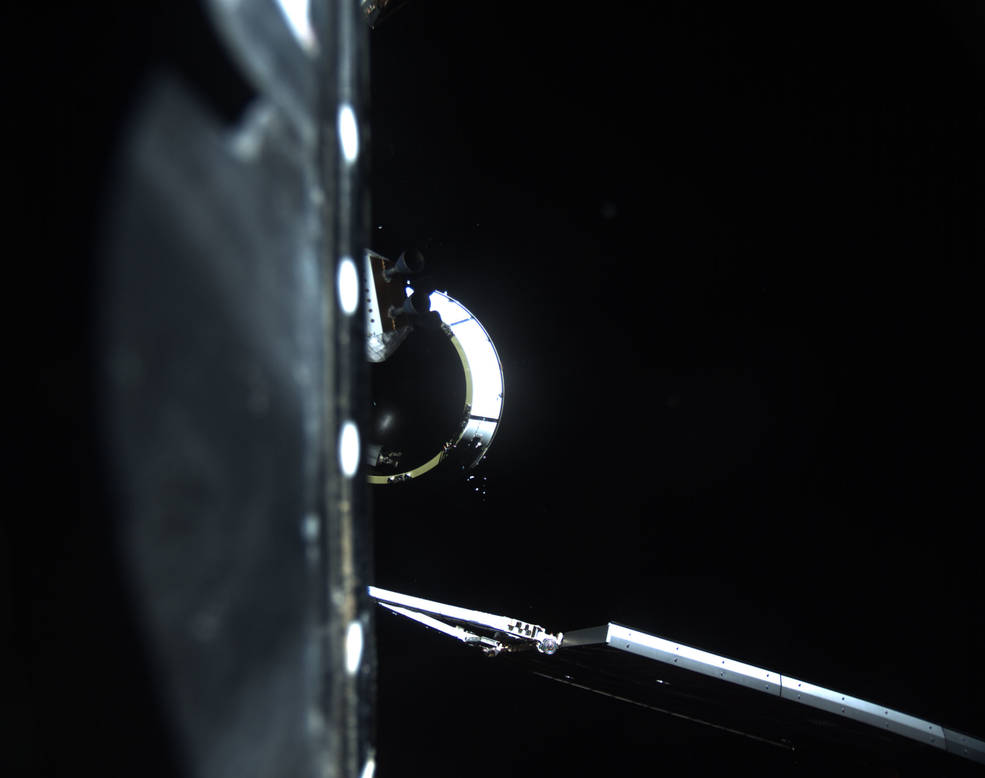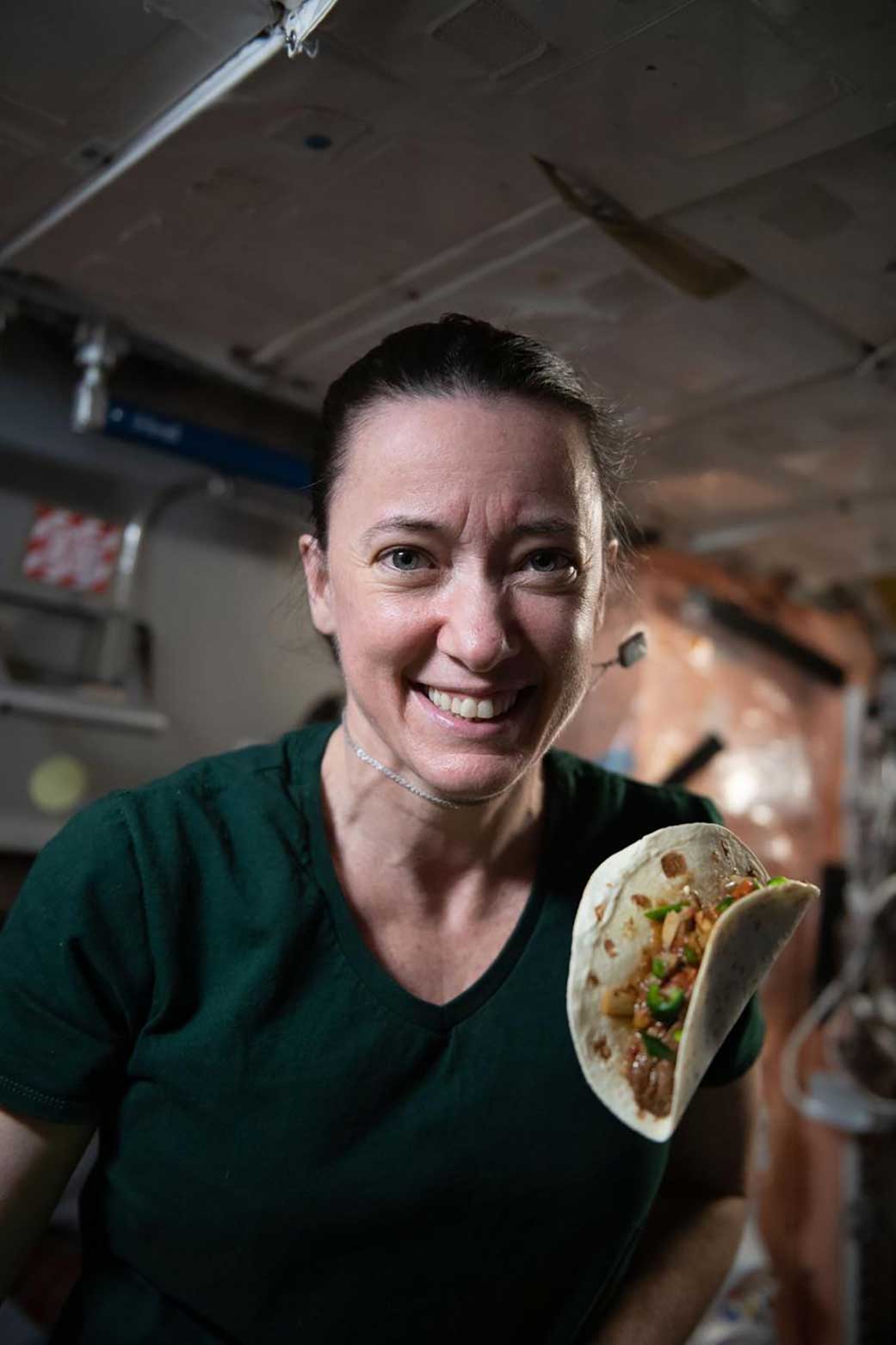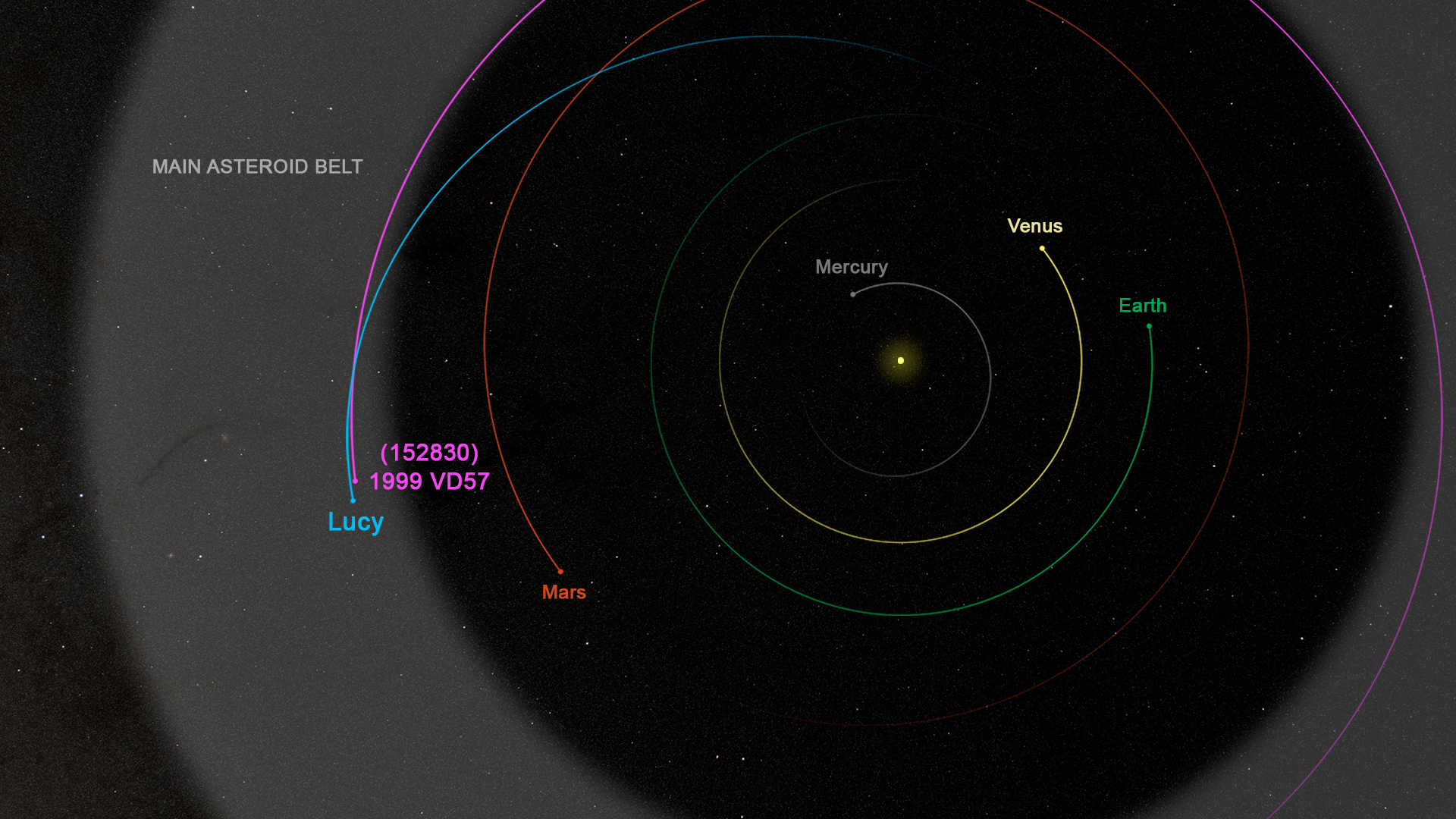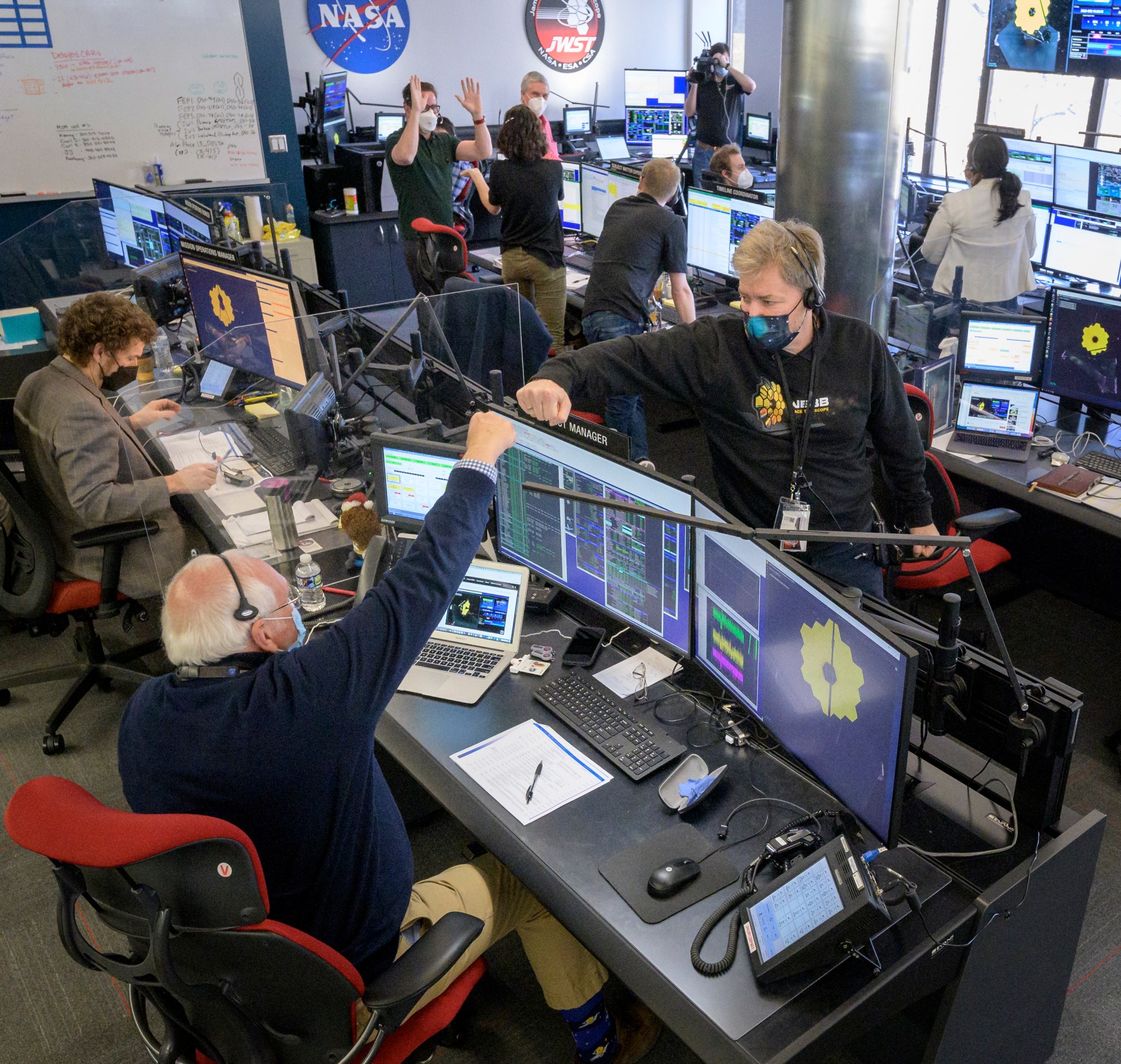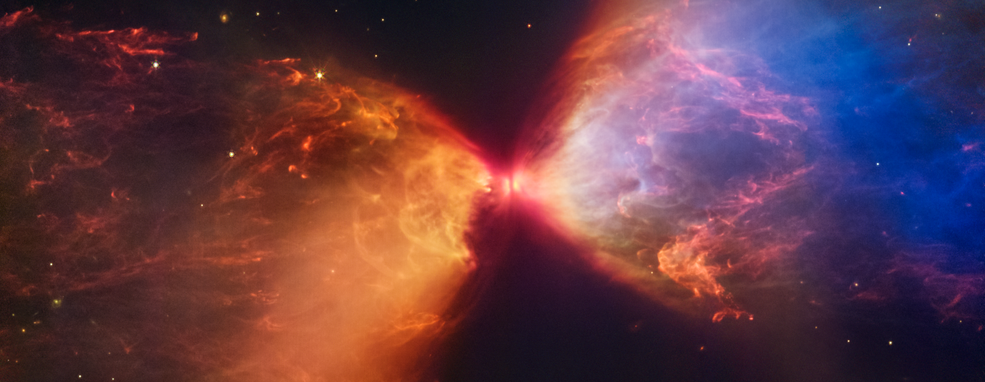The Marshall Star for February 1, 2023.
In This Week’s Star
- Marshall Leaders Discuss Center Strategy During All-Hands
- NASA Marshall Honors Memory of Fallen Astronauts
- 24 Marshall Team Members Honored with Silver Snoopy Awards
- LaTonya Powell Named Deputy Chief Information Officer
- Marshall Seeks Artifacts, Art, Other Memorabilia for Planned Exploration Facility
- Data from the First SLS Flight to Prepare NASA for Future Artemis Missions
- NASA Announces Finalists in Challenge to Design Future Astronaut Food
- 50 States for Artemis: Electronics
- NASA’s Lucy Team Announces New Asteroid Target
- Webb Telescope Receives Top Space Foundation Award
Marshall Leaders Discuss Center Strategy During All-Hands
NASA Marshall Space Flight Center team members listen as Director Jody Singer, Associate Director, Technical, Larry Leopard, Deputy Director Joseph Pelfrey, and Center Strategy Lead Jeramie Broadway lead an all-hands meeting Feb. 1 that focused on future center strategy. Marshall leaders discussed the center’s strategic goals and plans to assert its role into the evolving spaceflight environment. “We are implementing a new center strategy that will continue to leverage Marshall’s unique offerings while enabling us to grow as a center, creating additional value for NASA, the community, and the nation’s space exploration program,” Singer said. Pelfrey highlighted the overarching goal of the agency to establish a blueprint for a sustained human presence and exploration throughout the solar system. He presented a wide variety of pursuits that stem from this broad goal, which are subsequently organized into “business units” that are maintained by mission support and execution teams. Some examples of these pursuits include lunar and Mars habitats, landers, in-space manufacturing, pressurized rovers, and autonomous operations. “Every single Marshall employee fits into this plan and we need everyone’s help to ensure a successful implementation,” Pelfrey said. The leaders also answered questions about the increasing focus on partnering with other centers, industry, academia, and other government agencies. “Partnership is a chance to capitalize on Marshall’s strengths and perform interesting, hands-on work that will keep our skills sharp and push the bounds of technology as we press forward with our Moon to Mars goals,” Leopard said. Singer and Leopard both emphasized that while the space industry has significantly improved their capabilities, NASA and Marshall have invaluable and exclusive skills to offer. “We are committed to moving into the future with a vast community of partnerships that will advance the nation’s space exploration goals,” Singer said. “We want everyone to see themselves in this future and be a part of making this future a reality.” Visit here for more information on Marshall’s strategy for the future. (NASA/Charles Beason)
Marshall Deputy Director Joseph Pelfrey talks about future center strategy during the Feb. 1 all-hands meeting. (NASA/Charles Beason)
NASA Marshall Honors Memory of Fallen Astronauts
NASA’s Marshall Space Flight Center team members gathered Jan. 26 to honor the astronaut crews and others who lost their lives while furthering the goals of human spaceflight. Marshall Director Jody Singer, right, was joined by Mike Hopkins, commander of the second crewed flight of NASA’s SpaceX Crew Dragon in 2021, to offer remarks and lead a candle-lighting ceremony in memory of the crews of Apollo 1 and space shuttles Challenger and Columbia. “They were our colleagues, they were our friends, and more – they were part of our family,” Singer said. She noted the risks always inherent in space exploration, echoing earlier remarks by NASA Administrator Bill Nelson. “But with this risk comes the responsibility not just to learn from what we do, but to honor those we have lost,” Singer told those in attendance in Building 4221. “We remind ourselves what it really means to be in this business, where we do the impossible. We must ask the questions, we must speak up, and we must remain vigilant about our astronauts’ safety and the safety of our workforce.” (NASA/Mick Speer)
24 Marshall Team Members Honored with Silver Snoopy Awards
By Lane Figueroa
Twenty-four NASA Marshall Space Flight Center team members received Silver Snoopy Awards during a ceremony at the center’s Activities Building on Jan. 26. The Space Flight Awareness Program manages the awards, which are presented by a NASA astronaut.
They are a distinct honor – fewer than 1% of the aerospace workforce receive it annually. This year at Marshall, astronaut Michael Hopkins presented the awards, which included a framed certificate and sterling silver Snoopy lapel pin that has flown in space.
Marshall Associate Director, Technical, Larry Leopard, provided opening remarks on the history and reputation of the award.
“It’s only fitting that astronauts want to thank you personally for all that you do and have done for America’s space program,” Leopard said. “You keep Marshall on the leading edge of scientific progress and exploration.”
Hopkins directly addressed the important role of a strong support system.
“The success of those that are going to come up on stage wouldn’t have happened without all of you (the families and friends) and the support, love, and friendship that you’ve provided,” Hopkins said.
Since the beginning of the Apollo program, the beagle has contributed to the excitement of NASA human spaceflight missions. The Orion spacecraft on Artemis I carried a package of silver Snoopy pins for future recognition and a stuffed Snoopy dressed in an orange flight suit that served as the zero-gravity indicator.
Silver Snoopy recipients are recognized for contributing to the success of human spaceflight with their unique expertise. This year’s recipients came from a variety of organizations across Marshall.
“No matter what your job is, it impacts what we do up there in space,” Hopkins said. “NASA is one giant team, and it takes all of us to go to space.”
The 2023 Silver Snoopy Award recipients included:
- Wade S. Amis, Office of Procurement
- Linda K. Boczek, L&M Technologies, Inc, Officer of Center Operations
- Chad B. Bryant, Space Launch System Program
- Adam Butt, Engineering Directorate
- James “Buzz” Buzzell, Engineering Directorate
- Daniel P. Cavender, (formerly)Science and Technology Office
- Andrew J. Cecil, Human Exploration Dev. & Operations Office
- Scott C. Chartier, Engineering Directorate
- Coleman B. Cobb, Engineering Directorate
- Joshua Harley Davidson, Aerojet Rocketdyne
- David E. Eddleman, Engineering Directorate
- Patrick R. Fulda, Engineering Directorate
- Karen C. Hicks, Engineering Directorate
- Christopher D. Hood, Media Fusion, Office of Strategic Analysis and Communications
- John W. Kress, Space Launch System Program
- J. Scott Moore, Office of the Chief Financial Officer
- Ronald B. Renfroe, Engineering Directorate
- Mike D. Shadoan, Space Launch System Program
- Sandra M. Such, Safety & Mission Assurance
- Kevin C. Takada, Engineering Directorate
- Randall J. Thornton, Engineering Directorate
- Jason S. Thrasher, Engineering Directorate
- Brian M. West, Engineering Directorate
- Casey C. Wolfe, Engineering Directorate
Learn more about the Silver Snoopy Award and the Space Flight Awareness Program here.
Figueroa, a Media Fusion employee, supports Marshall’s Office of Strategic Analysis & Communications.
LaTonya Powell Named Deputy Chief Information Officer
LaTonya Powell has been named deputy chief information officer at NASA’s Marshall Space Flight Center.
Powell will help create and manage Marshall’s information technology vision and direction. Other responsibilities will include technical leadership in the design, development, integration, and operation of Marshall and NASA information systems and services, including security, planning, policy development, architecture, governance and compliance with Marshall, NASA, and federal government policies and directives.
Powell was previously office chief for Mission Support Business Enabling Applications within the Application and Platform Service Line where she was responsible for the maintenance and operations of enterprise and Marshall-specific applications. She was responsible for NASA’s enterprise suite of applications and platforms, enabling business processing for procurement, financial, and strategic infrastructure end user communities. She also partnered with the Marshall Application Working Group, providing leadership in the analysis and prioritization of center investments in support of organizational requirements.
During her NASA career, Powell has gained extensive experience in the planning, development, and successful deployment of complex information technology solutions and services. She served as IT project manager for the agency’s current contract writing solution and NASA’s Enterprise Automation Service. Most recently, she led the Requirement Development Team for the acquisition of a new Enterprise IT Service Delivery contract designed to align with the Office of the Chief Information Officer’s organizational transformation.
Powell began her NASA career in 2004 as an information technology specialist, focused on the development, implementation, and operations of NASA’s enterprise business applications.
Prior to NASA, Powell worked at Accenture from 1998-2004. She held various consulting roles supporting information technology solutions and processes across industries such as banking, insurance, and healthcare. Powell also specialized in large-scale enterprise resource planning software implementations that ultimately led her to NASA.
Powell earned a bachelor’s degree in transportation management and logistics from North Carolina Agricultural and Technical State University in Greensboro, and a master’s degree in management information systems from the University of Alabama in Huntsville. She has been awarded a Space Flight Awareness Award and an Exceptional Service Medal.
A native of North Carolina, Powell resides in Madison with her husband, Brian, and daughters Chloe and Ava.
Marshall Seeks Artifacts, Art, Other Memorabilia for Planned Exploration Facility
Planning is underway at NASA’s Marshall Space Flight Center for its next collaboration and innovation hub, the Marshall Exploration Facility – and team members are invited to contribute existing Marshall artifacts and art that honors the center’s pioneering legacy and its continuing endeavors in science, discovery, and human spaceflight.
A team of architects and engineers in Marshall’s Facilities Management Office invites civil servants and contractors across the center to contribute artifacts and art that may be displayed in the new facility.
Facilities personnel also seek drawings, models, prototypes, materials samples, and hardware components used to support development of rockets, telescopes, science experiments, avionics and optics systems, and other spaceflight hardware or test articles.
Items of any size will be considered, and do not need to be in mint condition. Unique items already in consideration for the new facility include a training version of the Apollo-era lunar rovers deployed on the Moon and Marshall’s “anthropometric man.” The latter was used to simulate the size and mass of a human body in the Neutral Buoyancy Simulator, which was used for astronaut training at Marshall from 1968-1997.
Instead of a single, gallery-style display, the new building will be designed “to incorporate artifacts and art along the path of travel around the building that effectively transform the entire facility into a reflection of Marshall accomplishments past, present, and future,” said Tracie Tarel, an architect in Marshall’s Facilities Engineering Office.
To submit items for consideration, email information about each piece to Tarel and Marshall facilities engineer Angela Bell. Include digital photographs where possible. Submissions will be accepted through June 1, and all acquisitions will go through proper NASA channels.
The Marshall Exploration Facility will be built on the site of the recently demolished Building 4200. Further details about construction, including groundbreaking plans, will be forthcoming in the weeks ahead.
Data from the First SLS Flight to Prepare NASA for Future Artemis Missions
By Alyssa Lee
NASA continues to evaluate data and learn more about the Space Launch System (SLS) rocket’s debut performance during the agency’s Nov. 16 Artemis I launch. Following an initial data assessment and review that determined the SLS rocket met or exceeded all performance expectations, SLS engineers are now taking a closer look at the Moon rocket’s performance to prepare for the first crewed Artemis missions.
Building off the assessment conducted shortly after launch, the preliminary post-flight data indicates that all SLS systems performed exceptionally and that the designs are ready to support a crewed flight on Artemis II. The post-flight analysis team will continue reviewing data and conducting final reporting.
“NASA’s Space Launch System rocket has laid the foundation for the Artemis Generation and the future of spaceflight in deep space,” said John Honeycutt, SLS Program manager at NASA’s Marshall Space Flight Center. “The correlation between actual flight performance and predicted performance for Artemis I was excellent. There is engineering and an art to successfully building and launching a rocket, and the analysis on the SLS rocket’s inaugural flight puts NASA and its partners in a good position to power missions for Artemis II and beyond.”
Ahead of launch, teams established benchmarks for the rocket’s performance through a series of pre-flight simulations and test campaigns. As the rocket launched and ascended to space, it experienced dynamic phases, like extreme forces and temperatures, that influenced its operations. The Artemis I flight test was the only way to gather real data on how the rocket performed during events like booster separation.
Engineers in the SLS Engineering and Support Center at Marshall collected more than four terabytes of data and on-board imagery from SLS during pre-launch and launch phases. In addition, a total of roughly 31 terabytes of imagery data alone was collected from ground cameras, cameras on the rocket, and aerial cameras that were focused on SLS. By comparison the Library of Congress’ printed material is roughly 20 terabytes.
“The data we got back from Artemis I is critical in building confidence in this rocket to send humanity back to the Moon,” said John Blevins, SLS chief engineer. “The SLS team will use what we learn from this flight test to improve future flights of the rocket, and we are already taking what we’ve learned about operations and assembly and applying it to streamline future missions.”
Cameras and sensors also allowed teams to monitor how the rocket performed during its in-space maneuvers. Seeing launch from the SLS rocket’s “view” involved strategically positioning cameras, sensors, and other measurement tools all along the rocket, the mobile launcher, and the launch pad.
“The numerous views of the Artemis I rocket, including the solid rocket booster separation and interim cryogenic propulsion stage (ICPS) separation, provided imagery data that helped us assess how SLS performed from liftoff through the ascent and separation events,” said Beth St. Peter, SLS imagery integration lead.
Engineers also monitored the extreme temperatures and sounds the rocket experienced just after liftoff. SLS post-flight data have shown the RS-25 engines’ thrust and mixture ratio control valves were within 0.5% of predicted values. The mixture ratio is the ratio of fuel to oxidizer that determines the temperature and thrust coming from the engines throughout their eight minutes of flight time. Other key engine internal pressures and temperatures were within 2% of pre-flight predicted values.
In flight, the SLS core stage successfully executed all its functions and inserted the ICPS and Orion spacecraft into an initial Earth orbit of 972.1 miles by 16 miles. The insert was just 2.9 miles shy of the perfect bullseye target of 975 miles by 16 miles and well within acceptable parameters. Following a near-perfect trans-lunar injection burn, the ICPS and Orion spacecraft successfully separated – allowing Orion to complete a 25.5-day mission.
Through Artemis, NASA will land the first woman and the first person of color on the surface of the Moon, paving the way for a long-term lunar presence and serving as a steppingstone for astronauts on the way to Mars.
For more information on SLS, please visit the SLS Reference Guide.
NASA Announces Finalists in Challenge to Design Future Astronaut Food
By Tee Quillin
NASA has selected 11 finalists in Phase 2 of the Deep Space Food Challenge, a public competition to extend the limits of humans in space – through food.
A first-of-its-kind coordinated effort between NASA and the Canadian Space Agency (CSA), the Deep Space Food Challenge aims to kickstart future food systems for pioneering missions to the Moon, Mars, and beyond. The multiphase technology competition invites problem-solvers around the world to design, build, and test new ways to sustain astronauts in space for months or even years at a time.
“As we prepare for long-duration human spaceflight, food is essential not only for nutrition, but also familiarity and comfort on long voyages and in isolated environments,” said Jim Reuter, associate administrator for NASA’s Space Technology Mission Directorate. “Drawing on the creativity of innovators is allowing us to tackle this important yet complex challenge in new and interesting ways.”
The second phase of the competition opened in January 2022 and challenges both new teams and previous Phase 1 winners to build small-scale prototypes of their ideas. Dozens of teams developed innovative technologies to use minimal resources, create little waste, and produce safe, healthy, and appetizing foods for astronauts.
Among the proposed solutions are systems that create food using carbon dioxide and fungal proteins, as well as closed-looped systems designed to grow and sustain greens and vegetables. A panel of expert judges from across academia, industry, and government evaluated teams’ submissions on criteria such as design innovation, scientific and technical approach, as well as the feasibility of their design. Eleven selected teams qualified to move on to the final round of Phase 2 judging.
The following U.S. finalists will each receive $20,000:
- InFynity (Chicago, Illinois) is utilizing a fungi protein to prepare nutritious and delicious foods.
- Nolux (Riverside, California) is producing plant- and fungal-based food using artificial photosynthesis.
- Mu Mycology (Hillboro, Oregon) uses a closed-loop mushroom cultivation system allowing for scalable growth of various edible mushrooms.
- Kernel Deltech USA (Cape Canaveral, Florida) produces inactivated fungal biomass using a continuous cultivation technique.
- Interstellar Lab (Merritt Island, Florida) produces fresh microgreens, vegetables, mushrooms, and insects to provide micronutrients for long-tern space missions.
- Far Out Foods (St. Paul, Minnesota) developed a nearly closed-loop food production system called the Exo-Garden that is capable of producing a variety of mushrooms and hydroponic vegetables.
- SATED (Boulder, Colorado), or Safe Appliance, Tidy, Efficient, & Delicious, cooks a variety of well-known foods from long-shelf-life ingredients.
- Air Company (Brooklyn, New York) developed a system that captures carbon dioxide exhaled by astronauts, combined with hydrogen made with water electrolysis, to produce alcohol that is then fed to an edible yeast to make proteins, fats, and carbohydrates.
Additionally, NASA and CSA jointly recognized three international finalist teams from outside the U.S. and Canada:
- Enigma of the Cosmos (Melbourne, Australia) created a food production system with an adaptive growing platform that could increase the efficiency by at least 40%.
- Solar Foods (Lappeenranta, Finland) uses gas fermentation to produce single-cell proteins.
- Mycorena (Gothenburg, Sweden) developed a circular production system utilizing a mix of microalgae and fungi, resulting in a microprotein using minimal resources while generating minimal waste.
“In addition to meeting needs for long-term deep space missions, the judges also considered the potential use of the technology here on Earth, where food insecurity is a significant problem in harsh environments,” said Denise Morris, the Prizes Challenges, cand Crowdsourcing program’s acting program manager for Centennial Challenges at NASA’s Marshall Space Flight Center.
U.S. teams were asked to envision the future and adaptability of their technologies by developing a plan to scale for power, mass, and volume in different environments; increase the variety to include more or different food outputs; and extend the stability of the ingredients and food outputs of their systems. Team Hefvin (Bethesda, Maryland) was recognized for these plans and received a $10,000 bonus prize for their work growing fruit cells in nutrient-rich media, producing berries rich in flavor, color, and aroma.
As a next step, judges will visit each of the Phase 2 finalists at their facilities to evaluate their technologies and the food outputs as well as participating in a demonstration to evaluate the acceptability and ease of the food production process. Following these on-site demonstrations, up to five top scoring U.S. teams will be recognized as Phase 2 challenge winners, each awarded $150,000. Up to three top scoring international teams will be recognized as Phase 2 challenge winners. The winners of Phase 2 are scheduled to be announced in April 2023.
The Deep Space Food Challenge is a coordinated effort between NASA and the Canadian Space Agency. Subject matter experts at NASA’s Johnson Space Center and the agency’s Kennedy Space Center support the competition.
The Deep Space Food Challenge is one of NASA’s Centennial Challenges, which are part of the Prizes, Challenges, and Crowdsourcing program within NASA’s Space Technology Mission Directorate. Marshall manages Centennial Challenges. NASA, in partnership with the Methuselah Foundation, will oversee the United States and international competitors.
Quillin, a Manufacturing Technical Solutions Inc. employee, supports Marshall’s Office of Strategic Analysis & Communications.
50 States for Artemis: Electronics
Electronics are the “brains” of the Space Launch System (SLS) and Orion. Watch to learn more about suppliers across the U.S. that are providing these. (NASA)
NASA’s Lucy Team Announces New Asteroid Target
NASA’s Lucy spacecraft will add another asteroid encounter to its 4-billion-mile journey. On Nov. 1, 2023, Lucy will get a close-up view of a small main-belt asteroid to conduct an engineering test of the spacecraft’s innovative asteroid-tracking navigation system.
The Lucy mission is already breaking records by planning to visit nine asteroids during its 12-year tour of the Jupiter Trojan asteroids, which orbit the Sun at the same distance as Jupiter. Originally, Lucy was not scheduled to get a close-up view of any asteroids until 2025, when it will fly by the main belt asteroid (52246) Donaldjohanson. However, the Lucy team identified a small, as-yet unnamed asteroid in the inner main belt, designated (152830) 1999 VD57, as a potential new and useful target for the Lucy spacecraft.
“There are millions of asteroids in the main asteroid belt,” said Raphael Marschall, Lucy collaborator of the Nice Observatory in France, who identified asteroid 1999 VD57 as an object of special interest for Lucy. “I selected 500,000 asteroids with well-defined orbits to see if Lucy might be traveling close enough to get a good look at any of them, even from a distance. This asteroid really stood out. Lucy’s trajectory as originally designed will take it within 40,000 miles of the asteroid, at least three times closer than the next closest asteroid.”
The Lucy team realized that, by adding a small maneuver, the spacecraft would be able to get an even closer look at this asteroid. So, on Jan. 24, the team officially added it to Lucy’s tour as an engineering test of the spacecraft’s pioneering terminal tracking system. This new system solves a long-standing problem for flyby missions: during a spacecraft’s approach to an asteroid, it is quite difficult to determine exactly how far the spacecraft is from the asteroid, and exactly which way to point the cameras.
“In the past, most flyby missions have accounted for this uncertainty by taking a lot of images of the region where the asteroid might be, meaning low efficiency and lots of images of blank space,” said Hal Levison, Lucy principal investigator from the Southwest Research Institute Boulder, Colorado office. “Lucy will be the first flyby mission to employ this innovative and complex system to automatically track the asteroid during the encounter. This novel system will allow the team to take many more images of the target.”
It turns out that 1999 VD57 provides an excellent opportunity to validate this never-before-flown procedure. The geometry of this encounter – particularly the angle that the spacecraft approaches the asteroid relative to the Sun – is very similar to the mission’s planned Trojan asteroid encounters. This allows the team to carry out a dress rehearsal under similar conditions well in advance of the spacecraft’s main scientific targets.
This asteroid was not identified as a target earlier because it is extremely small. In fact, 1999 VD57, estimated to be a mere 0.4 miles in size, will be the smallest main belt asteroid ever visited by a spacecraft. It is much more similar in size to the near-Earth asteroids visited by recent NASA missions OSIRIS-REx and DART than to previously visited main belt asteroids.
The Lucy team will carry out a series of maneuvers starting in early May 2023 to place the spacecraft on a trajectory that will pass approximately 280 miles from this small asteroid.
Lucy’s principal investigator is based out of the Boulder, Colorado branch of Southwest Research Institute, headquartered in San Antonio, Texas. NASA’s Goddard Space Flight Center provides overall mission management, systems engineering, and safety and mission assurance. Lockheed Martin Space in Littleton, Colorado, built the spacecraft. Lucy is the 13th mission in NASA’s Discovery Program. NASA’s Marshall Space Flight Center manages the Discovery Program for the Science Mission Directorate at NASA Headquarters.
Webb Telescope Receives Top Space Foundation Award
NASA’s James Webb Space Telescope team has been selected to receive the 2023 John L. “Jack” Swigert, Jr., Award for Space Exploration, a top award from the Space Foundation. This annual award honors a space agency, company, or consortium of organizations in the realm of space exploration and discovery.
“The James Webb Space Telescope team represents the best of our humanity and an enduring pursuit to better understand the cosmos. Every new image is a new discovery,” said NASA Administrator Bill Nelson. “Webb is the culmination of decades of persistence and once-unthinkable human ingenuity made possible by international partnerships. Together, we are unfolding the universe and inspiring the world.”
The award will be presented at the Space Foundation’s yearly opening ceremony of the Space Symposium in Colorado on April 17.
“Within its first year of operations, the work and revelations by the James Webb Space Telescope team has opened an entirely new chapter of knowledge and inspiration that will forever change our lives and history,” said Space Foundation CEO Tom Zelibor. “This is an unparalleled achievement and is transforming astronomy and space science while delivering new inspiration and imagination to every generation and corner of our planet. The partnerships and collaborations between nations, researchers, industry members, and more have also highlighted the incredible things we can do together as we promote knowledge.”
Webb, the world’s premier space science telescope, launched Dec. 25, 2021. In 2022, the Webb team successfully completed an intricate series of deployments to unfold the observatory into its final configuration in space. They then precisely aligned its mirrors to within nanometers, set up and tested its powerful instruments, and officially began Webb’s mission to explore the infrared universe.
With its optics performing nearly twice as well as the mission required, Webb is discovering some of the earliest galaxies ever observed, peering through dusty clouds to see stars forming, and delivering a more detailed view of the atmospheres of planets outside our solar system than ever before. Webb has also captured new views of planets within our solar system, including the clearest look at Neptune’s rings in decades. The Swigert award, which pays tribute to NASA astronaut Jack Swigert for his legacy of space exploration, will recognize the contributions of the team members who designed, developed, and now operate the Webb mission.
Our vast and dedicated team on the James Webb Space Telescope mission is already bringing us closer and closer to seeing the earliest, most distant galaxies that shine in our universe,” said Sandra Connelly, acting associate administrator for the Science Mission Directorate at NASA Headquarters. “Webb is an international collaboration involving a group of thousands of diverse people that has launched NASA into a new era of world-class science and is revolutionizing our view of the cosmos.”
Recent winners of the John L. “Jack” Swigert, Jr. Award include NASA and the University of Arizona OSIRIS-REx team, the teams behind the NASA JPL Mars Ingenuity Helicopter and InSight-Mars Cube One, NASA Dawn, and Cassini.
Webb, an international mission led by NASA with its partners ESA (European Space Agency) and CSA (Canadian Space Agency), is the world’s premier space science observatory. Its design pushed the boundaries of space telescope capabilities to solve mysteries in our solar system, look beyond to distant worlds around other stars, and probe the mysterious structures and origins of our universe and our place in it.
NASA Headquarters oversees the Webb mission. NASA Goddard manages Webb for the agency and oversees work on the mission performed by the Space Telescope Science Institute, Northrop Grumman, and other mission partners, including Ball Aerospace. In addition to Goddard, several NASA centers contributed to the project, including the agency’s Johnson Space Center, Jet Propulsion Laboratory, Marshall Space Flight Center, Ames Research Center, and others.
Recently, the Webb mission’s accomplishments also have been recognized by organizations including the National Space Club and Foundation, National Air and Space Museum, Aviation Week, Bloomberg Businessweek, Popular Science, and TIME.


























